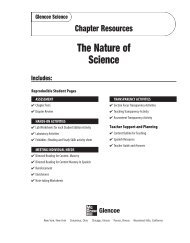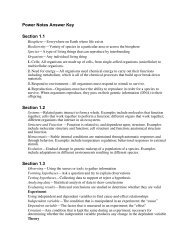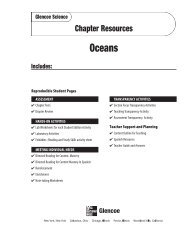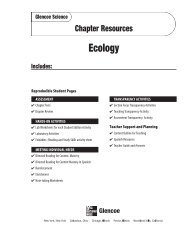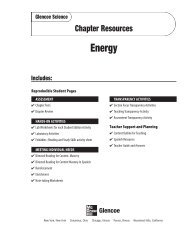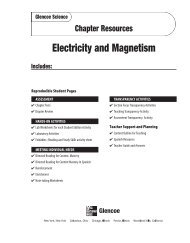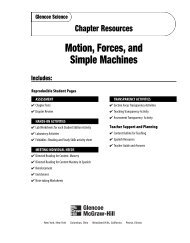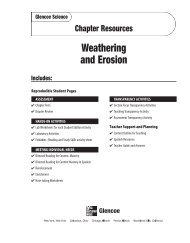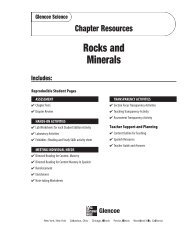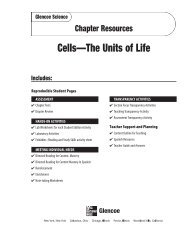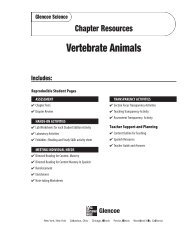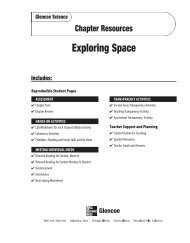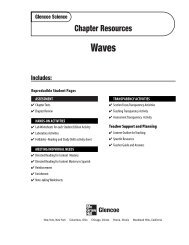Content Outline for Teaching - Potosi School District - Home
Content Outline for Teaching - Potosi School District - Home
Content Outline for Teaching - Potosi School District - Home
Create successful ePaper yourself
Turn your PDF publications into a flip-book with our unique Google optimized e-Paper software.
14<br />
Section 1<br />
<strong>Content</strong> <strong>Outline</strong><br />
<strong>for</strong> <strong>Teaching</strong><br />
Radiation from Space<br />
Exploring Space<br />
Underlined words and<br />
phrases are to be filled<br />
in by students on the<br />
Note-taking Worksheet.<br />
A. Electromagnetic waves—carry energy through space and matter<br />
1. Electromagnetic radiation includes radio waves, visible light, gamma<br />
rays, X rays, ultraviolet light, infrared waves, and microwaves.<br />
2. Electromagnetic spectrum—electromagnetic radiation arranged by wavelength<br />
a. Forms of electromagnetic radiation differ in their frequencies—the number<br />
of wave crests that pass a given point per unit of time.<br />
b. The shorter the wavelength, the higher the frequency.<br />
3. All electromagnetic waves travel at the speed of light,or 300,000 km/s<br />
B. Optical telescopes—use light to produce magnified images<br />
1. Refracting telescopes—have convex lenses<br />
2. Reflecting telescopes—use concave mirror<br />
3. Optical telescopes are often located in buildings called observatories, which<br />
often have roofs that can be opened <strong>for</strong> viewing.<br />
4. The Hubble Space Telescope, is located outside Earth’s atmosphere.<br />
a. Mistake made in shaping largest mirror.<br />
b. Once the mistake was repaired in 1999, the Hubble Space Telescope sent back<br />
images of a large cluster of galaxies.<br />
5. Active optics—computer helps correct poor images.<br />
6. Adaptive optics—laser relays in<strong>for</strong>mation to computer to adjust telescope’s<br />
mirror and make images clearer<br />
C. A radio telescope—studies radio waves that travel through space<br />
1. Because radio waves pass freely through Earth’s atmosphere, radio telescopes<br />
are usually useful 24 hours a day.<br />
2. Scientists use in<strong>for</strong>mation from radio waves to detect objects in space, map<br />
the universe, and look <strong>for</strong> signs of life on other planets.<br />
Discussion Question<br />
What is the main difference between an optical telescope and a radio telescope?<br />
Optical telescope uses visible light; and a radio telescope uses radio waves.<br />
Exploring Space 43




